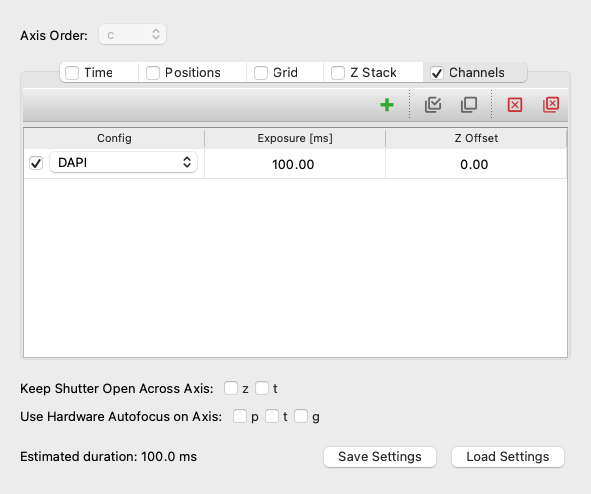MDASequenceWidget

MDASequenceWidget
#
Bases: QWidget
A widget that provides a GUI to construct and edit a useq.MDASequence.
This widget requires no connection to a microscope or core instance. It strictly
deals with loading and creating useq-schema useq.MDASequence objects.
load(file: str | Path | None = None) -> None
#
Load a useq.MDASequence from a file.
save(file: str | Path | None = None) -> None
#
Save the current useq.MDASequence to a file.
setValue(value: useq.MDASequence) -> None
#
Set the current value of the widget from a useq.MDASequence.
Parameters:
| Name | Type | Description | Default |
|---|---|---|---|
value |
MDASequence
|
The |
required |
value() -> useq.MDASequence
#
Return the current value of the widget as a useq.MDASequence.
Returns:
| Type | Description |
|---|---|
MDASequence
|
The current |
Example#
| mda_sequence_widget.py | |
|---|---|
1 2 3 4 5 6 7 8 9 10 11 12 13 14 15 16 17 18 | |